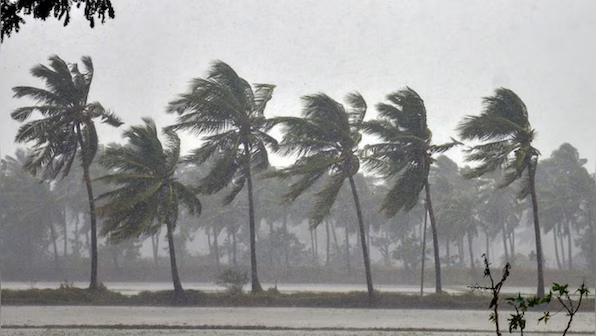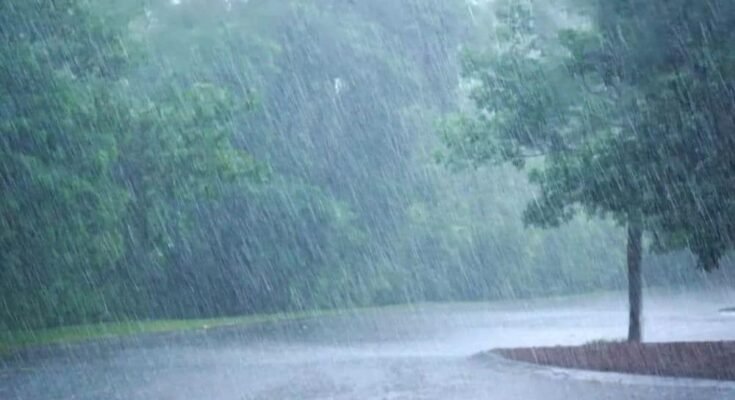Monsoon 2025

is already a hot topic in weather discussions, particularly across South Asia where billions of lives depend on the seasonal rains. The monsoon is more than just rainfall—it’s a crucial element of the agricultural economy, a potential disaster when extreme, and a cultural marker in many countries. Understanding what monsoon 2025 might bring is vital for individuals, governments, and industries alike.
With growing concerns around climate change, shifting weather patterns, and urban flooding, the 2025 monsoon season is shaping up to be one of the most closely monitored in recent history. In this article, we’ll explore the forecast, regional impact, environmental implications, preparedness steps, and how to make the most out of this annual climatic event.
Monsoon 2025: Weather Forecast and Predictions
Experts from national meteorological agencies and global climate centers are closely analyzing ocean temperatures, wind patterns, and past data to forecast monsoon 2025. The influence of El Niño and La Niña, along with the Indian Ocean Dipole, is being factored into long-range models.
Early Arrival or Delayed Start?
Initial predictions indicate a normal to slightly above-normal rainfall trend. Monsoon 2025 may arrive earlier than the usual schedule in southern parts of India and Sri Lanka, while the western regions may see a delayed onset. Scientists warn that regional irregularities are likely, meaning while some areas may get plenty of rainfall, others might face dry spells or erratic downpours.
This uneven distribution can cause serious disruptions—especially in farming, where timing and consistency of rain are critical.
Importance of Monsoon 2025 for Agriculture and Economy
The outcome of monsoon 2025 will have a direct bearing on agricultural productivity in South Asia, particularly in India, Nepal, Bangladesh, and Pakistan.
Impact on Crop Sowing and Harvesting
Over 55% of India’s farmland is rain-fed. If the rains are late or inconsistent, the sowing of key crops like rice, pulses, maize, and millet will suffer. This leads to lower yields, food price inflation, and increased economic pressure on farmers.
To counteract these challenges, agricultural departments are encouraging farmers to adopt drought-resistant seeds and adjust sowing dates. The government has also planned additional crop insurance schemes to reduce risks tied to monsoon 2025 uncertainties.
Environmental Concerns During Monsoon 2025
While monsoons bring relief from heat and help recharge groundwater, they also raise several environmental challenges.
Floods, Landslides, and Soil Erosion
Excessive rainfall during monsoon 2025 could result in flash floods in urban areas and landslides in mountainous regions. Deforestation, poor drainage systems, and unchecked urbanization only worsen these issues.
Cities like Mumbai, Chennai, and Dhaka are at high risk of waterlogging, especially when high tides coincide with heavy rains. In response, urban planners are being urged to upgrade drainage systems, preserve wetlands, and develop flood-resilient infrastructure.
Monsoon 2025 and Urban Preparedness
As cities expand, the risk of flooding during monsoon season increases significantly. This year, several metropolitan authorities are preparing in advance for monsoon 2025.
Smart Cities and Rain Management
Smart cities are leveraging technology to handle the upcoming rains better. Real-time weather updates, flood alerts via mobile apps, and smart drainage monitoring systems are being implemented. Cities like Pune and Bengaluru are already experimenting with AI-based water level monitoring to provide early warnings to residents.
In urban areas, individual preparedness also plays a major role. Residents are being advised to:
- Keep rooftops and drainage lines clean.
- Secure outdoor items before storms.
- Store emergency kits with essentials.
- Avoid unnecessary travel during peak rain days.
Health and Safety During Monsoon 2025
With rain comes a surge in health risks. Monsoon 2025 could see a rise in waterborne and vector-borne diseases if adequate precautions aren’t taken.
Common Monsoon Illnesses and Prevention
Diseases like cholera, typhoid, leptospirosis, malaria, and dengue spike during the rainy season. Stagnant water becomes a breeding ground for mosquitoes, while contaminated water sources spread bacterial infections.
To reduce health risks, people are advised to:
- Drink only boiled or filtered water.
- Avoid eating street food during heavy rains.
- Keep surroundings clean and dry.
- Use mosquito repellents and nets.
- Seek early medical attention for fever or stomach issues.
Health departments across South Asia are launching public awareness campaigns to prepare for monsoon 2025.
Cultural Significance of Monsoon 2025
Despite its challenges, the monsoon continues to hold a special place in local traditions and cultures. From poetry and songs to festivals and rituals, rain has long been celebrated in art and daily life.
Festivals, Music, and Traditions
The arrival of monsoon 2025 will likely be marked by celebrations such as:
- Teej in Nepal and parts of India, where women celebrate the monsoon with songs, fasting, and swings.
- Onam in Kerala, which begins just after the monsoon, symbolizing renewal and prosperity.
- Rain songs in Indian classical music like Raag Malhar that are inspired by the sound and mood of rain.
In rural areas, farmers may perform rain-invoking rituals and dances, showing their deep emotional connection with nature’s cycles.
How Climate Change Is Shaping Monsoon 2025
Global warming is disrupting long-standing monsoon patterns, making them harder to predict. Climate scientists warn that monsoon 2025 might become another example of climate-induced volatility.
Unpredictable Patterns and Long-Term Changes
In recent years, monsoons have shown trends such as:
- More intense but shorter rainfall spells.
- Extended dry periods within the rainy season.
- Sudden cloudbursts causing extreme floods.
These trends pose a threat to water management systems, agriculture, and disaster preparedness. Tackling this issue requires global cooperation, sustainable policies, and local action.
Preparing for Season: Checklist for Individuals and Families
Being ready for monsoon 2025 isn’t just about watching the weather—it’s about acting ahead of time. Here’s a simple checklist:
- Inspect Your Home: Repair leaky roofs and seal wall cracks.
- Check Electrical Systems: Ensure proper insulation and avoid exposed wiring.
- Emergency Kit: Include torch, batteries, dry food, drinking water, first aid, and essential medicines.
- Stay Informed: Follow local weather alerts and instructions from authorities.
- Plan Evacuation Routes: If in a flood-prone area, know the nearest safe shelter.
Following these steps can minimize inconvenience and even save lives during the critical days of monsoon 2025.
Government Action and Public Policy for Monsoon 2025
Governments across the monsoon belt are stepping up preparations. From city corporations to national disaster response forces, everyone is on alert.
Key Initiatives for This Year
- Upgraded Weather Forecast Systems: Improved radar stations and satellite tracking.
- Flood Management Plans: Temporary shelters, sandbags, and rescue boats pre-deployed.
- Agriculture Support: Subsidies for drought-resistant seeds and emergency irrigation.
- Insurance Expansion: More inclusive policies to help farmers and homeowners recover from rain-related damage.
These steps show a more proactive approach toward managing monsoon 2025, rather than reacting after damage is done.
Conclusion: Looking Ahead to Monsoon 2025
Monsoon 2025 is not just a season—it’s a test of resilience, planning, and adaptability. It’s about more than just umbrellas and flooded roads. It determines the fate of farmers, the success of crops, the stability of city life, and the health of millions.
By understanding its patterns, anticipating its challenges, and embracing both science and tradition, we can turn this natural phenomenon into an opportunity rather than a threat.
As we prepare, let us also reflect on our role in protecting the environment so that future monsoons continue to sustain life, not disrupt it. Whether you’re a policymaker, a student, a farmer, or just a city dweller watching the skies—monsoon 2025 is your moment to act wisely.




